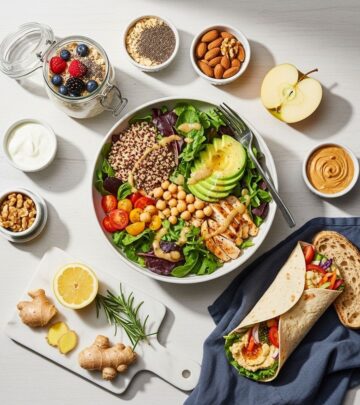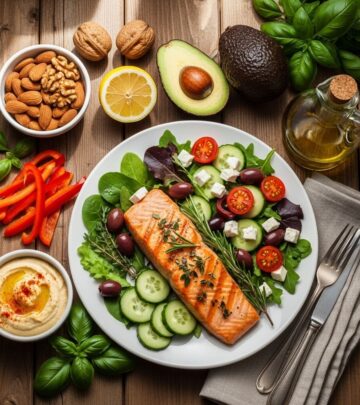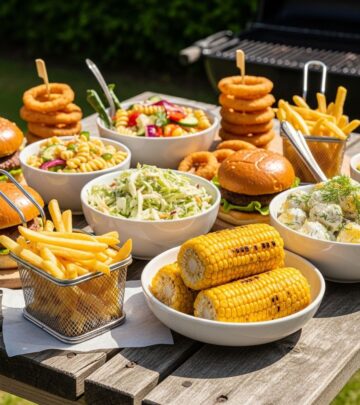French Cuisine: A Flavorful Journey Through Tradition and Region
Discover the depth and diversity of French cuisine—from rich regional specialties to timeless culinary tradition.

French cuisine is celebrated worldwide for its elegance, depth of flavor, and masterful technique. Steeped in centuries of tradition, it blends high-quality local ingredients with innovative cooking styles, creating a diverse tapestry of regional meals and national favorites that have shaped modern gastronomy. With UNESCO’s recognition as an ‘Intangible Cultural Heritage,’ French cooking is not just about food—it is a way of life and a central part of French culture.
Characteristics of French Cuisine
- Elegance and Presentation: French dishes often feature sophisticated plating, paying meticulous attention to aesthetics and color harmony.
- Quality Ingredients: Emphasis on fresh, seasonal produce, dairy, meats, and seafood sourced locally whenever possible.
- Technique: Chefs employ precise methods, from classic sauces to modern steaming and seasoning approaches.
- Regional Flair: Each region boasts unique flavors—from hearty country stews to Mediterranean seafood treasures.
- Multi-course Meals: Meals are traditionally served in multiple courses, emphasizing balance between flavors and textures.
- Wine and Cheese Pairing: Cheese and wine are not just accompaniments; they are central to the meal experience.
- Celebratory Culture: French cuisine is integral to social gatherings and milestones, from birthdays to weddings, embodying a spirit of togetherness.
Traditional and Modern Styles
- Haute Cuisine: Originating in royal courts and upscale Parisian kitchens, it focuses on complex preparations and lavish presentations.
- Nouvelle Cuisine: A post-1970s movement that favors lighter dishes, shorter menus, and showcases the natural flavors of ingredients, often inspired by regional specialties.
History and Influence
French culinary history is a story of evolving tastes and global influence. In the Middle Ages, heavily spiced meats and thick mustards dominated the table. The Renaissance and later centuries saw master chefs such as Guillaume Tirel and Marie-Antoine Carême refining recipes to highlight indigenous French styles. By the 20th century, culinary tourism and guides like Michelin introduced the broader public to both urban haute cuisine and humble countryside fare, establishing French cooking as the gold standard in Western culinary education.
| Era | Culinary Features |
|---|---|
| Medieval | Service en confusion, spiced meats, thick sauces |
| 17th-18th Century | Emergence of indigenous style, focus on technique and presentation |
| Post-1970 | Nouvelle cuisine, lighter preparations, regional inspiration |
Regional Specialties: The Diverse Flavors of France
France’s culinary landscape is shaped by its regions, each distinguished by climate, geography, and cross-cultural interactions. Regional dishes serve as the soul of French cuisine, offering local twists on classic recipes.
Champagne, Alsace & Lorraine
- Renowned for sparkling wine and quality game, ham, and preserved fruits.
- Alsace showcases German influences, especially in choucroute garnie (French sauerkraut with pork).
- Lorraine is famous for quiche Lorraine and rustic fruit tarts.
Bordeaux, Périgord, Gascony & Basque Country
- Home to celebrated products: Bordeaux wines, foie gras, pâtés, and truffles.
- Farm-based cuisine includes chicken, duck, pigeon, goose, lamb, and beef—all prepared in hearty, flavorful ways.
- Armagnac, a grape brandy, is a regional specialty.
Provence-Alpes-Côte d’Azur
- Emphasizes Mediterranean influences from Italy and Spain, with abundant herbs, vegetables, seafood, and olive oil.
- Birthplace of iconic dishes such as ratatouille, bouillabaisse, and salade Niçoise.
- Sweet specialties include tarte tropézienne and nougat.
Other Distinctive Regions and Dishes
- Brittany & Normandy: Celebrate dairy, apples, cider, and seafood.
- Burgundy: Prized for beef dishes and red wine reduction sauces.
- Languedoc: Known for cassoulet, a hearty stew of beans and meat.
Signature Dishes of French National Cuisine
The following dishes represent the essence of French cooking, popular both in country homes and city bistros.
- Steak Frites: Classic Parisian bistro dish—pan-seared steak served with crispy fries.
- Gratin Dauphinoise: Slices of potato baked in cream, garlic, and sometimes cheese.
- Coq au Vin: Chicken braised in wine with mushrooms, onions, and bacon.
- Bouillabaisse: Provencal fish stew flavored with saffron, herbs, and sometimes orange peel.
- Ratatouille: Mediterranean vegetable ragout from Provence.
- Quiche Lorraine: Savory tart filled with cream, eggs, and bacon from Lorraine.
- Charcuterie: Assorted cured meats and pâtés, often paired with cheese and bread.
- Pâtisserie & Desserts: Includes classic pastries like croissants, eclairs, madeleines, and fruit tarts.
The Anatomy of a French Meal
A traditional French meal is often structured in a specific sequence of courses to highlight different flavors and textures:
- Hors d’œuvre/Entrée: Introductory bites or soup.
- Plat Principal: The main dish, often meat, fish, or poultry with sides.
- Salad (optional): Served after or with the main dish, dressed simply.
- Fromage: A cheese course before dessert.
- Dessert: Sweet finish—tart, mousse, pastry, or fruit.
Many households accompany meals with bread, often a fresh baguette, and a selection of local wine and cheese.
Essential French Ingredients
- Produce: Berries, leeks, mushrooms, apples, squash.
- Artisan Cheeses: Brie, Camembert, Roquefort, and many regional varieties.
- Breads & Pastries: Baguettes, croissants, brioche.
- Herbs: Thyme, tarragon, chervil, rosemary.
- Fresh Dairy: Cream, butter, and yogurt.
- Wine: Both red and white varieties, central to flavor and dining culture.
- Coffee: Traditionally strong and served after meals.
French Cooking Techniques
French chefs are renowned for their mastery of classic techniques, which are foundational to Western culinary training:
- Sautéing: Rapidly frying ingredients in a small amount of fat.
- Braising: Slowly cooking meat or vegetables in liquid for depth of flavor.
- Poaching: Gently simmering delicate ingredients like fish or eggs.
- Steaming: Often used for fish and vegetables in nouvelle cuisine to preserve taste and texture.
- Baking: For breads, pastries, and gratins.
- Classic Sauce Preparation: Espagnole, béchamel, velouté, and others form the backbone of French sauces.
Cultural Importance and Global Legacy
Food is both tradition and celebration in France. From family dinners to grand feasts, sharing a meal is an act of community and an opportunity to honor important life milestones—births, weddings, anniversaries, or just the everyday pleasure of good company. In 2010, UNESCO recognized French gastronomy for its social and cultural significance, cementing its status as a global treasure.
Frequently Asked Questions (FAQs)
- Why is French cuisine considered among the world’s best?
French cuisine blends high-quality local ingredients, rich tradition, innovative techniques, and an emphasis on presentation—qualities that have influenced global culinary standards. - What makes regional French dishes unique?
Each region utilizes its local climate, geography, and culture to create distinctive specialties—from Normandy’s creamy seafood to Provence’s vegetable-based recipes. - How is a typical French meal structured?
Most French meals include several courses: starter (hors d’œuvre/entrée), main dish, cheese, and dessert, often enjoyed with bread and wine. - Are French meals always elaborate?
While special occasions might feature complex dishes, everyday meals can be simple yet flavorful, highlighting fresh ingredients with minimal preparation. - What is the modern trend in French cooking?
The ‘nouvelle cuisine’ movement emphasizes lighter dishes, shorter menus, and natural flavors, moving away from heavy sauces and complicated preparations.
Conclusion: The Everlasting Allure of French Cuisine
French cuisine continues to captivate taste buds and inspire chefs across the globe. From the bustling bistros of Paris to the rustic farmhouses of Gascony, the French have perfected the art of bringing people together over exquisite food. With its unwavering commitment to quality, technique, and tradition, the flavor-rich world of French cookery remains at the heart of world gastronomy—celebrated for both its sophistication and soul.
Read full bio of medha deb












